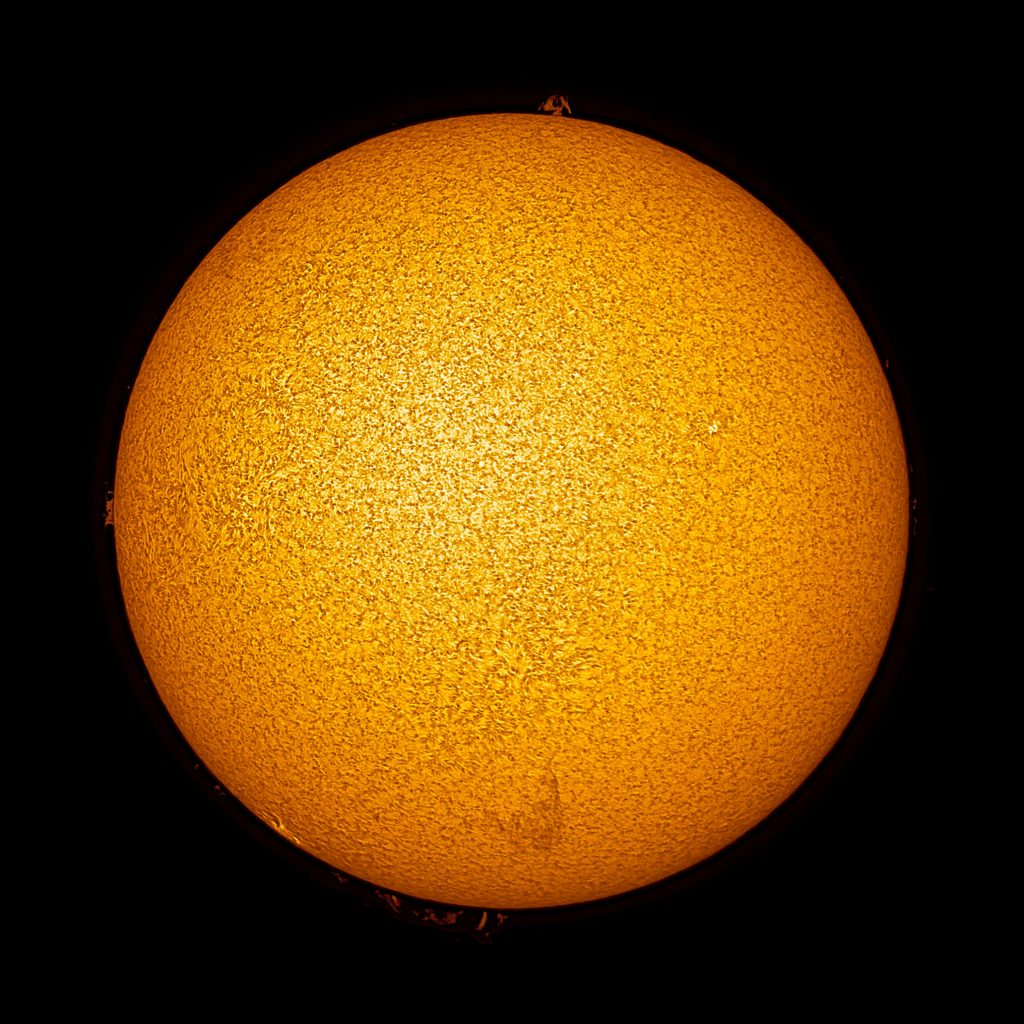I always wanted to capture the brightest object in the sky. However, it’s not as easy as you think. If you purchase any “normal” telescope, many unmissable warnings are covering the whole telescope not to point it to the sun, unless you want to get blind. This means if you’re going to observe or photograph the Sun, you need a dedicated telescope. There are basically two companies manufacturing dedicated solar telescopes: Coronado and Lunt. The third option is purchasing any refractor and using the DayStar filter QUARK. The third option is probably the cheapest way (depending on the selection of the refractor), but it has a feature, which I don’t like. The filter is equipped with the Barlow lens. This makes it nearly impossible to observe or photograph the whole disk. This was for me no-go and I started to decide between Coronado and Lunt. Based on pictures on astrobin.com I decided on Lunt. The next dilemma is the aperture – the bigger the better, but in the case of solar telescopes, the price grows exponentially with the aperture. In the end, I decided on 60 mm. Next decision: single or double stack. Here again the more stack the better, at least in terms of what you can see on the surface. Here is a very nice feature of the small Lunt telescope – the double stack is basically achieved by screwing the front filter in front of the telescope. This is a very fast way to turn the single stack, which is great for observation of the prominences, into the double stack, which is excellent for observing the surface. So I decided on the double stack.
The first experience with the single stack was great. The prominences were nicely visible. Moreover, even the surface had a clearly detectable structure. Then I screwed the double stack in front and the troubles started. Basically, the image was significantly worse compared to the single stack. After the discussion with Lunt, I am returning the front filter and waiting for the replacement.
Here is the stack of 540 images captured by FireCapture, processed by Autostakkert!, Registax, PixInsight, and LightRoom.

Technical details:
| Telescope | Lunt 60mm |
| Aperture | 60 mm |
| Focal length | 420 mm |
| Mount | Rainbow Astro RST 135 |
| Autoguiding | no |
| Camera | ZWO ASI 178MM |
| Corrector | no |
| Filters | No |
| Exposure | 1000x7ms, Gain 0, bin 1x1, |
| Date | 2021-08-21 |
